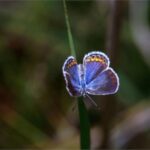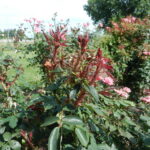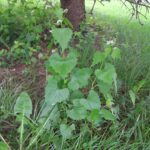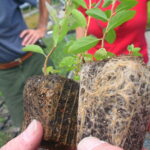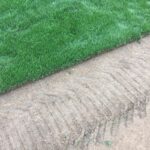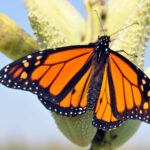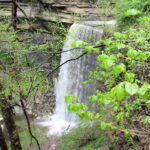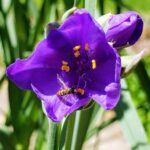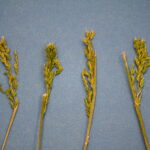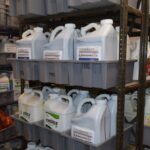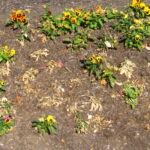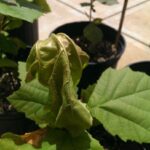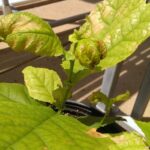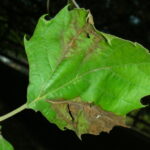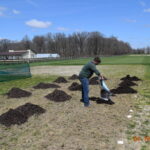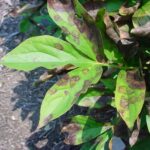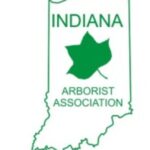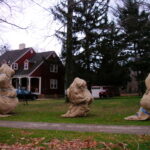Resources for landscapes and gardens in the Midwest
Search Results: weed
If you spend any time reading about native landscapes, you will quickly find numerous articles and guides for plants that are good for pollinators. Many native pollinator species are in decline, and choosing plants that support their lifecycle is a great way homeowners and landscapers can engage with the effort[Read More…]
Read MoreRose rosette disease is a severe problem for rose growers and occurs widely throughout many rose growing regions of the US, especially from the mid-South into the Midwest. The problem was described on roses in the early 1940s but actual cause of the disease remained murky until the pathogen was[Read More…]
Read MoreGarlic mustard (Alliara petiolata) can be found in public parks, backyards, meadows, forests, gardens, and along roadsides throughout Indiana. The leaves have a strong garlic smell to them. Garlic mustard was first introduced from Northeastern Europe in the 1860s in Long Island, New York. Immigrants from Europe used it for[Read More…]
Read MoreWhy Scout? Pathogens, insects, weeds and other pests negatively impact ornamental plant production (greenhouse, nursery, landscape). Integrated pest management (IPM) strategies are used to prevent (ideally) or mitigate damage to ornamental crops. IPM strategies of ornamentals include practices such as proper plant choice for the site, incorporation of resistant varieties[Read More…]
Read MoreThis publication is the first of a series of articles aiming to assess the economic feasibility of growing sod. Publications can be found at the Purdue Education Store. This publication assesses the economic feasibility of growing Kentucky bluegrass in the Midwest by determining the financial costs and returns associated with[Read More…]
Read MoreWorried about finding fewer monarch butterflies this year? This article puts this year’s local decline in perspective and provides suggestions to help conserve monarchs and other butterflies.
Read MoreDon’t give invasives species a ride during the fall camping and foliage season. This beautiful waterfall in Clifty Falls State Park is located only 20 miles from where spotted lanternfly has been found in Indiana. (Photo by M. Ruby)
Read MoreIntegrated Pest Management (IPM) is a proactive strategy that focuses on long-term prevention of pests by understanding the pest’s biology and utilizing a combination of control techniques. There are IPM strategies for all types of pests including weeds, insects, and diseases. Regardless of type, scouting and identification are the first[Read More…]
Read MoreOver the past week I have identified three different fowl bluegrass (Poa palustris) samples sent in to the Purdue Plant & Pest Diagnostic Lab (https://ag.purdue.edu/department/btny/ppdl/). This is not concerning, just unusual. This is not a grass species that I see that often, but I have seen several samples this year,[Read More…]
Read MoreBlack root rot (BRR), caused by the fungus Thielaviopsis basicola,has a host range of several hundred plants. In the landscape, the most common hosts include pansies (Fig. 1), and vinca, along with calibrachoa and petunia. In perennial hosts, it often infects lavender, phlox, milkweed and butterfly-weed (Asclepius spp.). Even woody[Read More…]
Read MoreWhile fungi are responsible for many of our foliar disease problems, different fungal pathogens present as problems throughout the country, depending upon the host plant grown and the environmental conditions. This is a brief overview of several common types of fungal leaf diseases occur in Indiana and throughout North America[Read More…]
Read MorePesticide drift can occur virtually anywhere — between neighboring farms, farms and residential properties, or neighboring residential properties. Whether it’s a next-door neighbor or a farmer who owns the field adjacent to your property, they have the legal right to apply pesticides to their property or property they lease. However,[Read More…]
Read MoreWhen spring mulching occurs, most companies will apply a preemergence herbicide for extending weed control. It is well known that the combination of mulch and preemergence herbicides is a very effective method in controlling weeds (https://www.purduelandscapereport.org/article/cultural-plus-chemicala-good-weed-control-combo-in-landscape-beds/). When applying preemergence herbicides with mulch, which should be first for the most effective[Read More…]
Read MoreLeaf blotch, also called red spot and measles, is a common disease of peony caused by the fungus Graphiopsis chlorocephala (=Cladosporium paenoiae). The disease has multiple names because there are multiple symptoms. Lesion on leaves and stems can vary from tiny red spots (“measles”) to larger brown or purple blotches[Read More…]
Read MoreThe Indiana Arborist Association will be hosting a virtual conference from Jan. 26-29, 2021, in lieu of its 73rd annual in-person meeting. The virtual event will offer a diverse group of speakers and topics in order to engage professionals, volunteers, managers and decision-makers alike. “As our organization gathers virtually together[Read More…]
Read MoreJoin us for the 2020 Turf and Landscape Seminar! Learn the latest research and best management practices from Purdue’s Green Industry Specialists. The seminar is available now until November 18th with a live question and answer session with the specialists on November 19th. All participants will receive a free copy[Read More…]
Read MoreAs the 2020 gardening year draws to a close, now is the time to ensure a successful gardening season next year, for you or your customers! Sanitation is a cornerstone of integrated pest management and is essential for good plant health management. Throughout the year, we have been plagued with[Read More…]
Read MoreSign-up to receive email news and alerts from Purdue Landscape Working Group:
